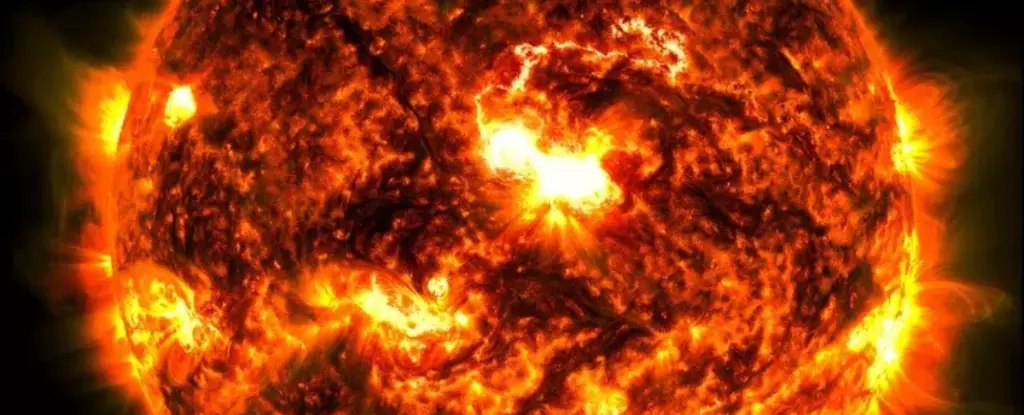As our planet orbits the dynamic Sun, we find ourselves in the midst of a solar cycle that significantly alters the space weather around us. Currently, scientists predict that a massive coronal mass ejection (CME)—a colossal release of plasma and magnetic field from the Sun—will soon collide with Earth’s magnetosphere. Set to make its presence felt by Thursday morning, this CME has the potential to generate stunning auroras at latitudes rarely witnessed before, reaching as far south as Alabama. This phenomenon highlights not only the beauty of our universe but also the very real and sometimes disruptive implications of solar activity on modern technology and infrastructure.
The Sun is known for its 11-year solar cycle, a period during which solar activity peaks and wanes. We are possibly near the culmination of this cycle, making it crucial to prepare for any consequences that may arise. Recent geomagnetic storms that occurred in May serve as a reminder of the powerful forces at play; those events generated vivid auroras far beyond the poles, captivating observers and sparking discussions about the potential ramifications of such solar activity.
As the CME hurtles through the cosmos at an astonishing speed of 2.5 million miles per hour, officials from the Space Weather Prediction Center are keenly monitoring its trajectory. Shawn Dahl, a spokesperson for the center, noted that the storm could potentially reach peak intensity from tomorrow morning through midday Eastern Time. While the predicted level of geomagnetic intensity has been designated as G4 on a scale that tops out at G5, meteorologists acknowledge the inherent unpredictability of such phenomena. Assessments concerning the precise impact of the CME will be refined when it passes about a million miles from Earth, better illuminating the shift in space weather conditions.
The federal emergency management apparatus has been alerted to this looming disturbance, coinciding with their ongoing efforts to manage other natural disasters, such as Hurricane Helene. This multi-faceted challenge reflects the systemic need to integrate space weather forecasts into disaster preparedness strategies.
When CMEs intersect with Earth’s magnetic field, they can provoke geomagnetic storms, which may create a cascade of disruptions across various technologies. Satellites, for instance, are particularly vulnerable; the radiation and charged particles can distort their orbits, necessitating adjustments to maintain proper functioning. Geomagnetic storms can also disrupt radio communications and GPS systems, leading to inaccuracies in navigation—an especially critical issue for sectors reliant on precision, such as agriculture.
Historically, we have seen the repercussions of intense geomagnetic activities. For example, the infamous Halloween Storms of 2003 resulted in significant blackouts in Sweden and caused lasting infrastructural damage in South Africa. During this month, precision-driven GPS systems encountered turmoil due to earlier geomagnetic instances, leading to issues that did not culminate in widespread grid failures but nonetheless demonstrated vulnerability within our energy and communication networks.
For the fortunate individuals located in regions where auroras are visible, there are optimal conditions to capture this extraordinary spectacle. As predictions suggest, areas from northern California to Alabama may witness shimmering lights dancing across the night sky. However, to fully appreciate the beauty of these natural phenomena, it is vital to escape the clutches of urban light pollution. Seeking out rural spaces or parks with minimal artificial lighting will enhance the chances of experiencing the vivid displays.
Photographing auroras can yield magnificent results, even for those with standard smartphones, thanks to advancements in digital imaging. Many cameras can detect light that may not be visible to the naked eye, making it possible to capture vibrant colors and movements that eloquently tell the story of Earth’s interactions with solar forces.
As we continue to observe and analyze the effects of solar phenomena, it becomes clear that understanding our Sun’s activity is crucial—both for the awe-inspiring beauty it can provide in the form of auroras and its potential to disrupt technology. The upcoming CME serves as a reminder not only of the power of space weather but also of the importance of vigilance and preparedness. In an era where technology is interwoven with daily life, knowing how to respond to such events is invaluable.



Leave a Reply